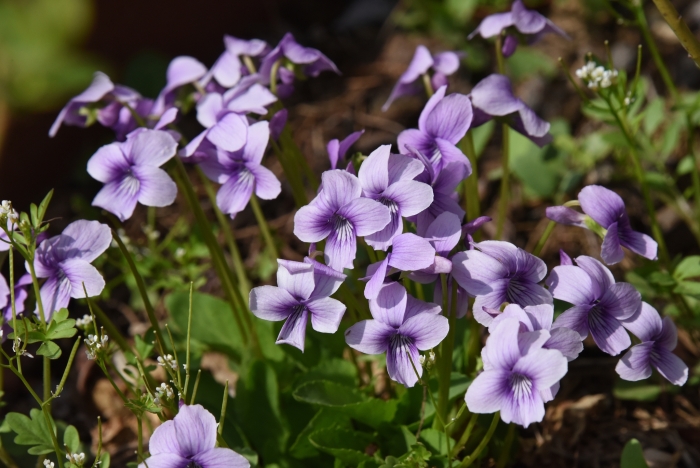Philippine Violet
(Viola philippica)
Philippine Violet (Viola philippica)
/
/

© Zinogre
CC BY-SA 4.0
Image By:
© Zinogre
Recorded By:
Copyright:
CC BY-SA 4.0
Copyright Notice:
Photo by: © Zinogre | License Type: CC BY-SA 4.0 | License URL: http://creativecommons.org/licenses/by-sa/4.0/ | Uploader: zinogre | Publisher: iNaturalist |

























Estimated Native Range
Summary
Viola philippica, commonly known as Philippine Violet, is a perennial herb native to East Asia, specifically found in the understory of forests and grassy slopes in regions such as China, Korea and Japan. It typically grows at a moderate rate to a height of 0.5-1.5 feet (0.15-0.5 meters) and a width of 0.5-1 feet (0.2-0.3 meters). The plant features heart-shaped leaves and produces purple, showy flowers with a prominent white center that bloom in the spring, adding a splash of color to garden settings.
Philippine Violet is appreciated for its ornamental flowers and is often used in shaded garden areas, woodland plantings, and as a border plant. It is relatively low-maintenance, requiring medium amounts of water and thriving in part shade to full shade conditions. The preferred soil is a medium or fast-draining loam that is rich in organic matter. While it is not known for serious pest or disease problems, it can occasionally suffer from leaf spots or mildew in overly moist conditions. Gardeners value this plant for its ability to naturalize in suitable conditions, spreading to form attractive ground cover over time.CC BY-SA 4.0
Philippine Violet is appreciated for its ornamental flowers and is often used in shaded garden areas, woodland plantings, and as a border plant. It is relatively low-maintenance, requiring medium amounts of water and thriving in part shade to full shade conditions. The preferred soil is a medium or fast-draining loam that is rich in organic matter. While it is not known for serious pest or disease problems, it can occasionally suffer from leaf spots or mildew in overly moist conditions. Gardeners value this plant for its ability to naturalize in suitable conditions, spreading to form attractive ground cover over time.CC BY-SA 4.0
Plant Description
- Plant Type: Herb
- Height: 0.5-1.5 feet
- Width: 0.5-1 feet
- Growth Rate: Moderate
- Flower Color: Purple
- Flowering Season: Spring
- Leaf Retention: Deciduous
Growth Requirements
- Sun: Part Shade, Full Shade
- Water: Medium
- Drainage: Medium, Fast
Common Uses
Border Plant, Butterfly Garden, Low Maintenance, Potted Plant
Natural Habitat
native to East Asia, specifically found in the understory of forests and grassy slopes in regions such as China, Korea and Japan
Other Names
Common Names:
Scientific Names: , Viola philippica, Viola chinensis f. alboviolacea, Viola chinensis f. anomala, Viola chinensis f. communis, Viola chinensis f. dissecta, Viola chinensis f. glabra,
GBIF Accepted Name: